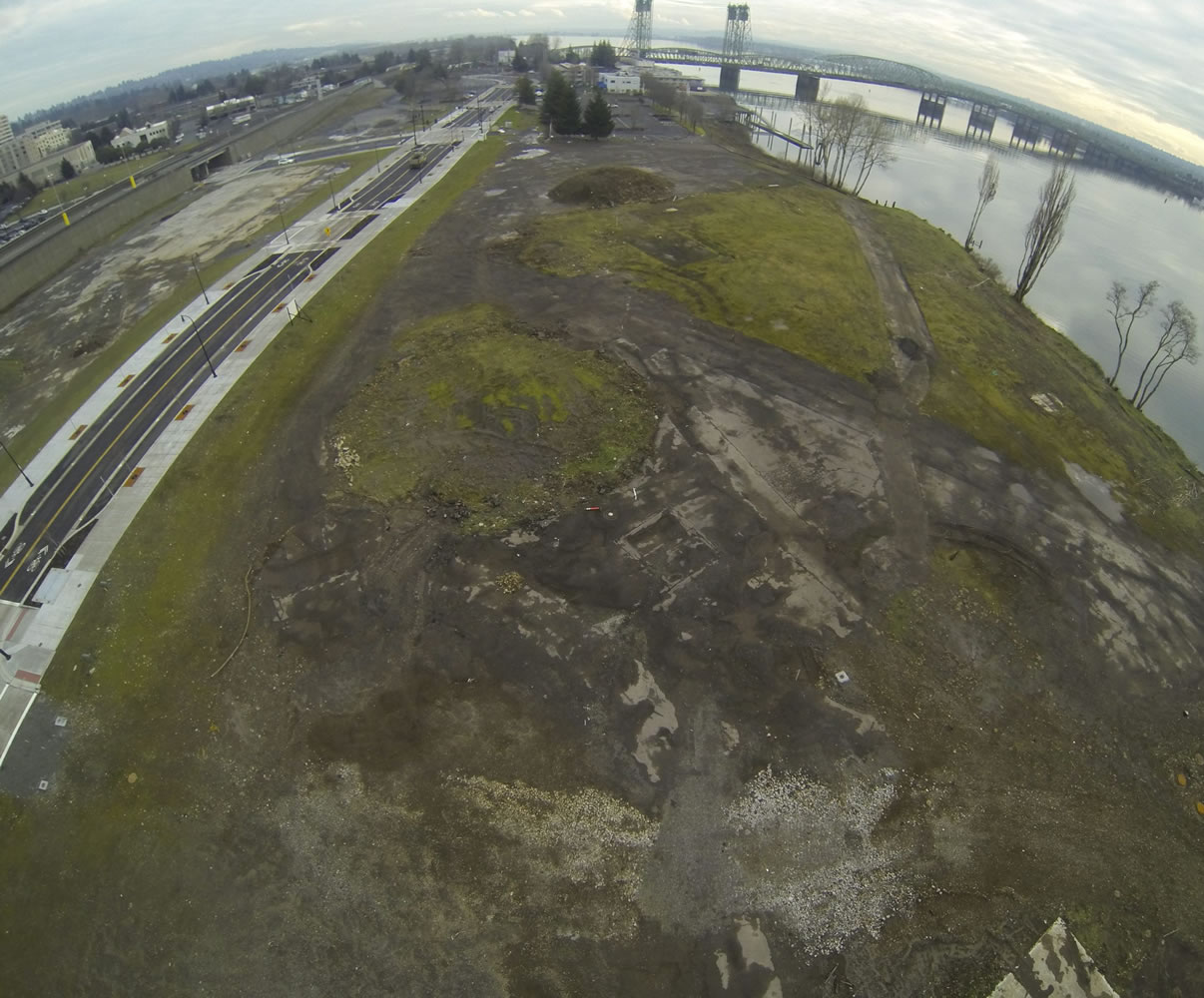This is the year big things will happen at the Waterfront Vancouver, an ambitious $1.3 billion commercial and residential project nearly a decade in the making.
Developers have announced the first restaurant and office building tenants to sign onto the project: Twigs Bistro and Martini Bar and M.J. Murdock Charitable Trust. The city has lined up money for a $17 million waterfront park at the heart of the 21-block project featuring a futuristic, cable-suspended pier.
Construction on the park and five buildings — two restaurant buildings, two apartment buildings and one office building — is slated to begin this summer.
Vancouver Mayor Tim Leavitt called it “an extremely exciting period for our community.”
“There’s been a lot of hard work, a lot of persistence, a lot of great collaboration between the public and private partners involved,” he said Wednesday. “To bring it to fruition after eight years of diligence, it’s nice to know we’ll see the shovels turning some dirt this year. … It’s turning the page into a bright, exciting and prosperous future.”




